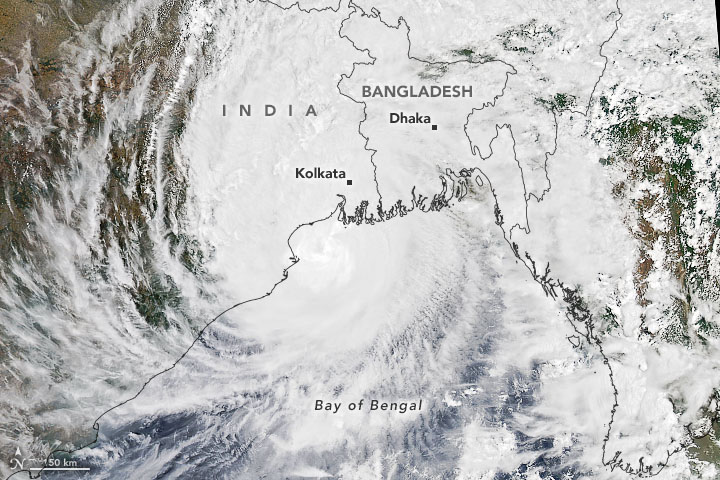
Amphan, the first tropical cyclone of the 2020 season in the North Indian basin, made landfall on May 20, 2020. The deadly storm slammed ashore near the border of eastern India and Bangladesh, delivering substantial storm surge to coastal areas. Captions and image source: NASA / Earth Observatory
Excerpts;
Cyclones are a regular occurrence in the region and contrary to the commonly held perception, the mangrove ecosystem is quite resilient to momentary disturbances. However, when combined with other threats, most of which have an anthropogenic origin, the sustenance of the ecosystem can indeed be found wanting.
The south of Bengal has been decimated by the category 5 super cyclone Amphan during the night of 20 May and the early hours of 21 May. This was the strongest cyclone ever to strike the eastern state in the recent past, leaving behind a trail of destruction. This has potentially created a scene of disaster like never before.
As the winds wreaked havoc and the administration looked helplessly at an unfolding natural calamity, the mangrove ecosystem of the Sundarbans could have absorbed a part of the force to considerably reduce the intensity of the storm…
Read Full Article: “Amphan, Sundarbans and an agenda for reconstruction”ORF (05-25-2020)
Read Full Article, Cyclone Amphan Reinforces Urgent Need for Climate Adaptation Planning; EI Columbia University (05-26-2020)
The mangrove forests of the Sundarbans delta — designated a UNESCO World Heritage site — play an important part in protecting the Bengal and Bangladesh coastline from the crushing blow of cyclones, acting like naturally occurring “green infrastructure.” Large sections of the forest have been cleared in recent decades for the development of roads, embankments, and fisheries. Cyclone Amphan is another back-breaking hit to an ecosystem that supports about 4 million people…









